12 Most Useful Electronic Safety Systems in Cars
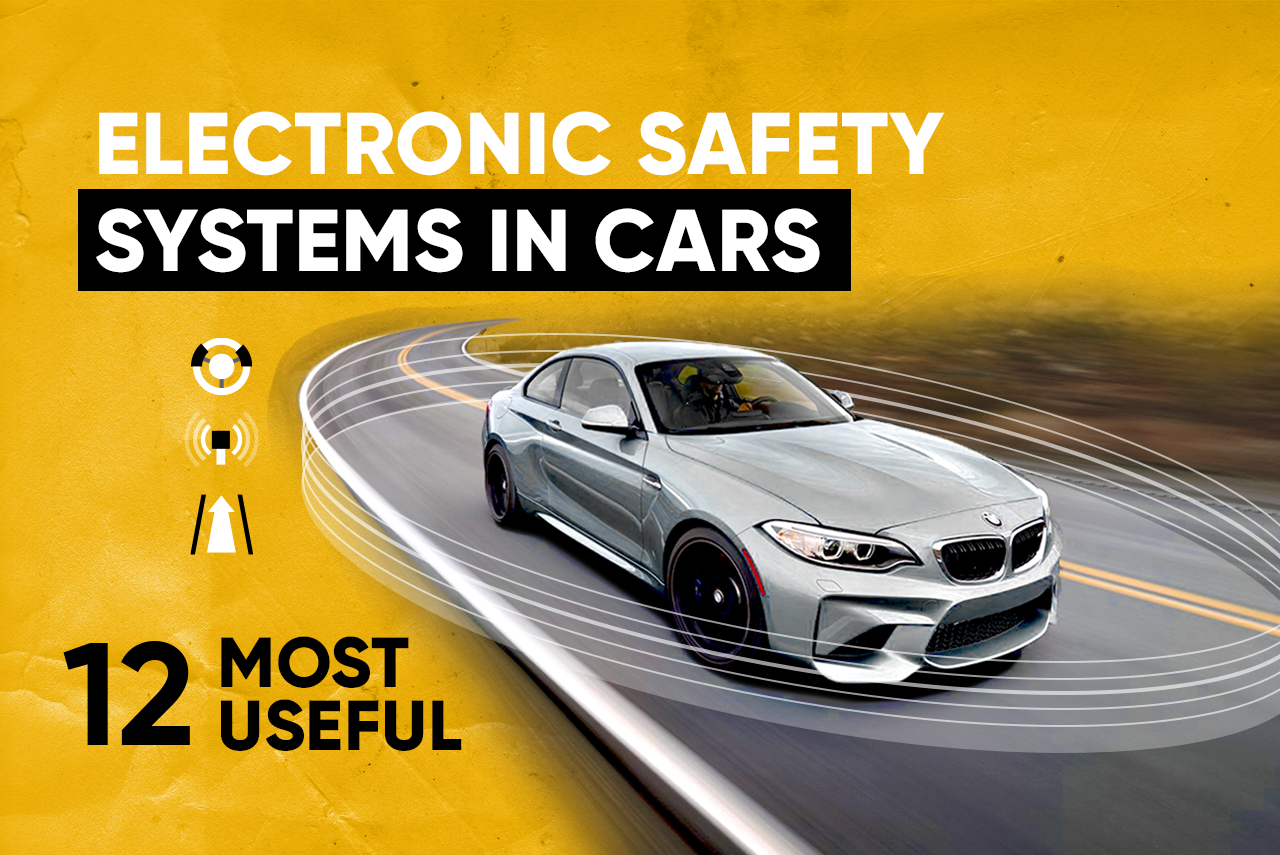
Are you proud of your car having numerous electronic assistants? Most likely, there will be even more of them in your next one. But which ones are really useful? Columbus professionals examined the latest automotive safety systems and identified 12 of the best.
Most modern safety features are available on a variety of vehicles, from inexpensive compact sedans to luxury cars. Manufacturers often bundle them with expensive navigation systems or technology packages, and the features are assigned branded names.
Some systems are truly important and useful; others you'll likely never need. You should carefully study the capabilities of modern assistants and choose those you don’t mind paying for.
Here's a quick look at the safety systems that are most widely available today and can really help out on the road.
1. Adaptive Cruise Control
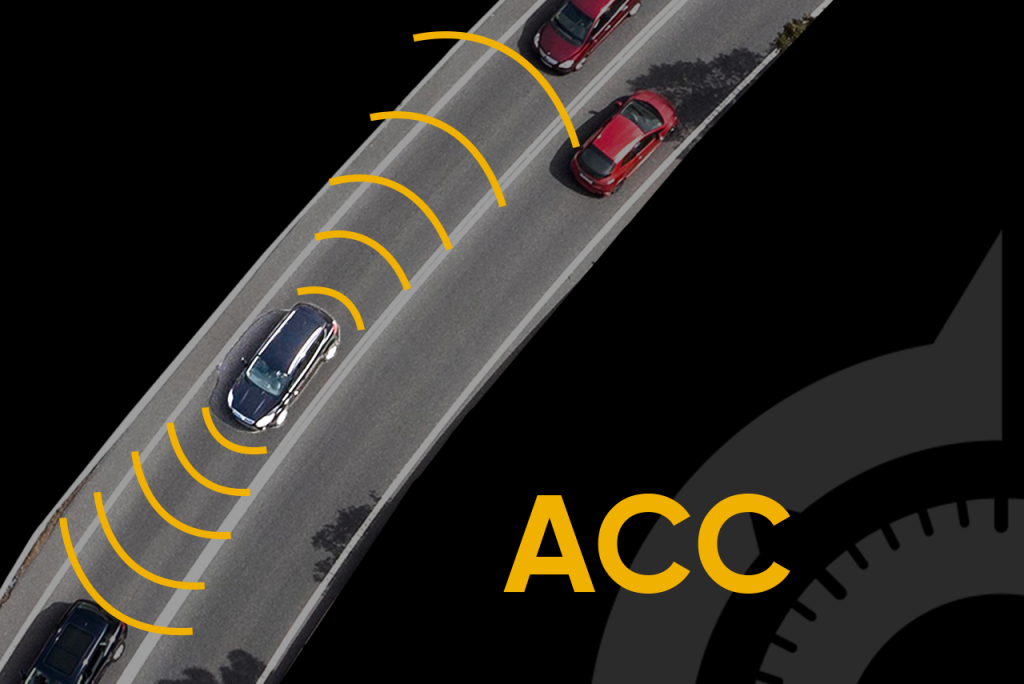
The features allows you to maintain a set speed, like regular cruise control. But Adaptive Cruise Control (ACC) also accelerates and decelerates the car, allowing you to seamlessly stay in the flow, keeping up with other travelers. Using a combination of radar, cameras and processing power, ACC will pull on the throttle or apply the brakes as needed if you get too close to the vehicle in front. When the road is clear again, the system returns the car to the desired speed. Some ACCs only work with speeds higher than a certain threshold. The best ones can even function in stop-and-go traffic, bringing the vehicle to complete stop and accelerating again when conditions allow.
Examples: Chrysler Adaptive Cruise Control Plus with Full Stop, Ford Adaptive Cruise Control, Honda Adaptive Cruise Control, Nissan Intelligent Cruise Control 2.
2. Blind Spot Monitoring System
Blind Spot Monitor / DSM is a true assistant in ensuring safety on a busy highway, especially in inclement weather. It uses cameras or radar to monitor traffic in adjacent lanes. If a vehicle is detected on the side or slightly behind your car, the system activates a warning light installed in or next to the outside mirror on the corresponding side. Thus, the system warns that there is a vehicle in the blind zone, i.e. not visible in the rear view mirror. This makes navigating lanes so much easier and most importantly safe.
Examples: Ford Blind-Spot Information System, Chrysler Blind-Spot Monitoring, Subaru Blind-Spot Detection, Volvo Blind-Spot Information System.
3. Cross-Traffic Alert System
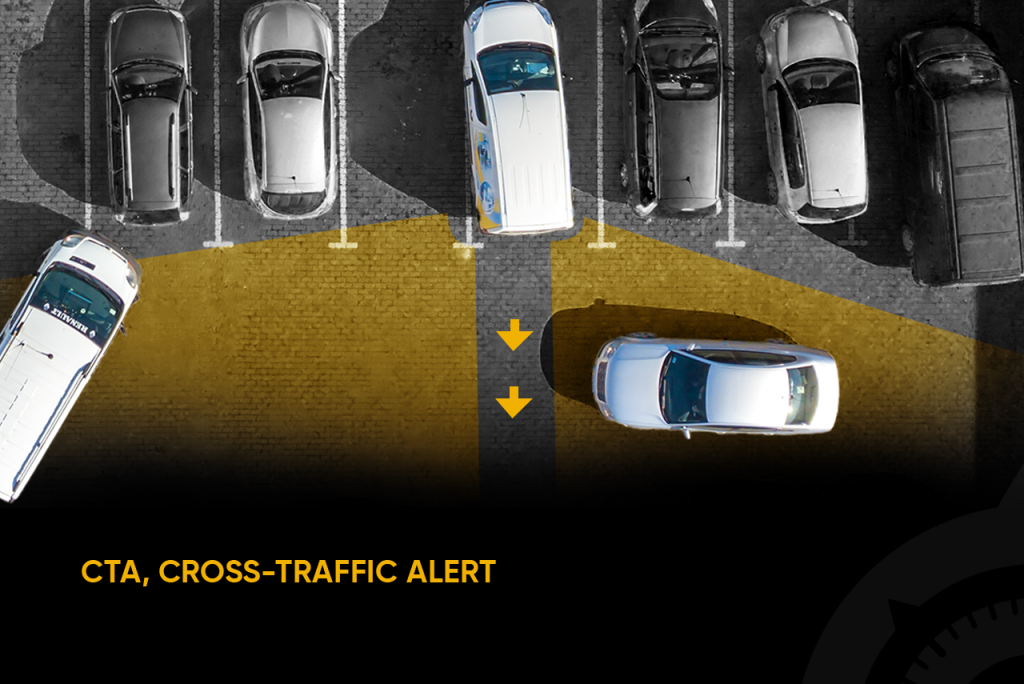
Cross-Traffic Alert (CTA) is just what you need in a busy parking lot. It uses radar to detect approaching cars when you back up out of a parking space. The system gives you a sound warning when it detects a vehicle approaching from any direction. And it does so before you yourself can detect the danger, like for example, if you’re surrounded by large SUVs. Advanced CTAs apply the brakes if they determine that a collision is imminent.
Examples: Chevrolet Rear Cross-Traffic Alert, Chrysler Rear Cross Path, Nissan Rear Cross-Traffic Alert, Subaru Rear Cross-Traffic Alert.
4. Lane Departure Warning System
Lane Departure Warning system (LDW) is triggered by information from cameras and/or radar, as well as special sensors. LDW monitors lane markings as you drive on the highway and secondary two-lane roads, and issues an audible and/or visual warning when you cross them. Some systems - for example the one from General Motors - vibrate the seat cushion on the side where the car is veering off course as an additional warning to the driver.
Examples: Cadillac Lane-Departure Warning with Safety-Alert Seat, Honda Lane-Departure Warning, Toyota Lane-Departure Alert.
5. Lane Keeping Assist
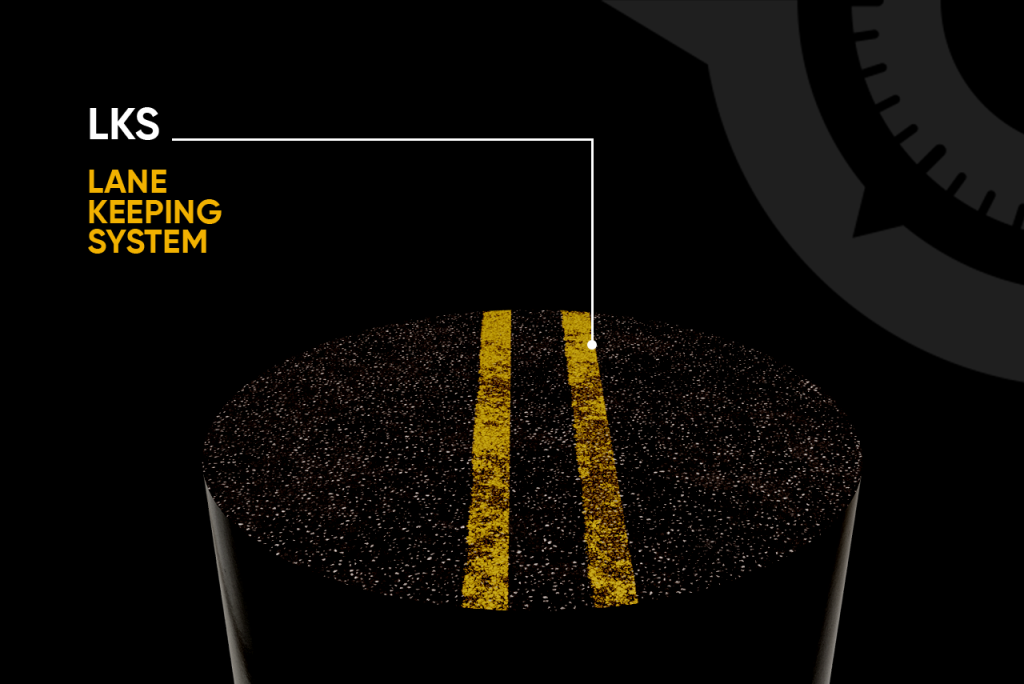
The Lane Keeping System (LKS) makes the car practically self-driving. That is, it automatically takes action to keep the vehicle in its lane. Essentially, it's a more robust combination of adaptive cruise control (ACC) and lane keeping assist (LKA). When activated, the system allows the driver to do other tasks, which is especially handy in a traffic jam.
But of course LKS can not completely replace the driver. Therefore, when you remove both hands from the steering wheel, the system issues a warning signal.
Examples: Chevrolet Lane-Keep Assist, Mercedes-Benz Active Blind-Spot Assist, Chrysler Lane-Keep Assist, Honda Lane-Keeping Assist System.
6. Forward Collision Warning
The Forward Collision Warning (FCW) system notifies the driver in the event of a possible collision with the vehicle ahead. It uses the same type of camera, radar or laser as adaptive cruise control. The system provides visual and audible warning when a collision is imminent. At the same time, it reacts to danger with increasing intensity as it approaches: warning lights on the dashboard or icons projected onto the windshield change color from yellow to red and sound signals become more frequent.
Examples: Chevrolet Forward-Collision Alert, Honda Forward-Collision Warning, Nissan Predictive Forward-Collision Warning.
7. Brake Assist System
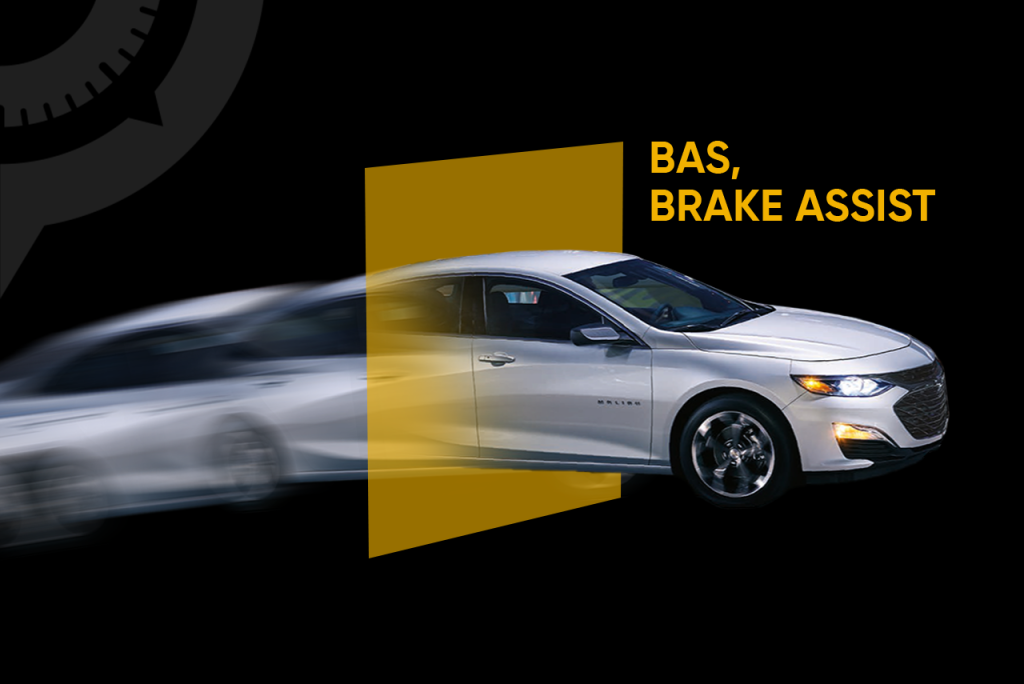
Brake Assist (BAS) is activated when it detects that the driver has started emergency braking. BAS complements the efforts by providing optimal braking force without locking the wheels, which could cause skidding. Working in conjunction with the anti-lock brake system (ABS), Brake Assist responds faster than the quickest driver. As a result, emergency braking is done safely while minimizing the braking distance.
Examples: Ford Brake Support, Honda Collision-Mitigation Braking System, Toyota Brake Assist.
8. Autonomous Emergency Braking
First of all, do not confuse the Autonomous Emergency Braking (AEB) system should with the Brake Assist System (BAS). The latter does not engage itself, while AEB applies the brakes automatically if the driver is inactive.
In most cases, automatic braking can prevent a collision or at least mitigate the severity of the accident and related injuries.
A vehicle equipped with AEB system uses laser, radar or cameras to monitor traffic. If the driver is slow to react, it gives them time to come to their senses - using visual and/or audio signals - and only then takes control.
Examples: Chrysler Forward-Collision Warning Plus, Honda Collision-Mitigation Braking System, Toyota Pre-Collision System with Pedestrian Detection.
9. Parental / Employer Monitoring
Several automakers including Ford and General Motors, offer systems that allow parents or employers to configure one or more keys to manage vehicle settings. This is useful if you want to ensure the safety of a teen driver or monitor your employee's driving.
For example, you can program the car's maximum speed, limit the radio volume, or turn on a seat belt warning. The system allows you to record the distance traveled by the car and notify you when a certain limit is exceeded.
Examples: Ford My Key, Chevrolet Teen-Driver Vision.
10. Pedestrian Detection System
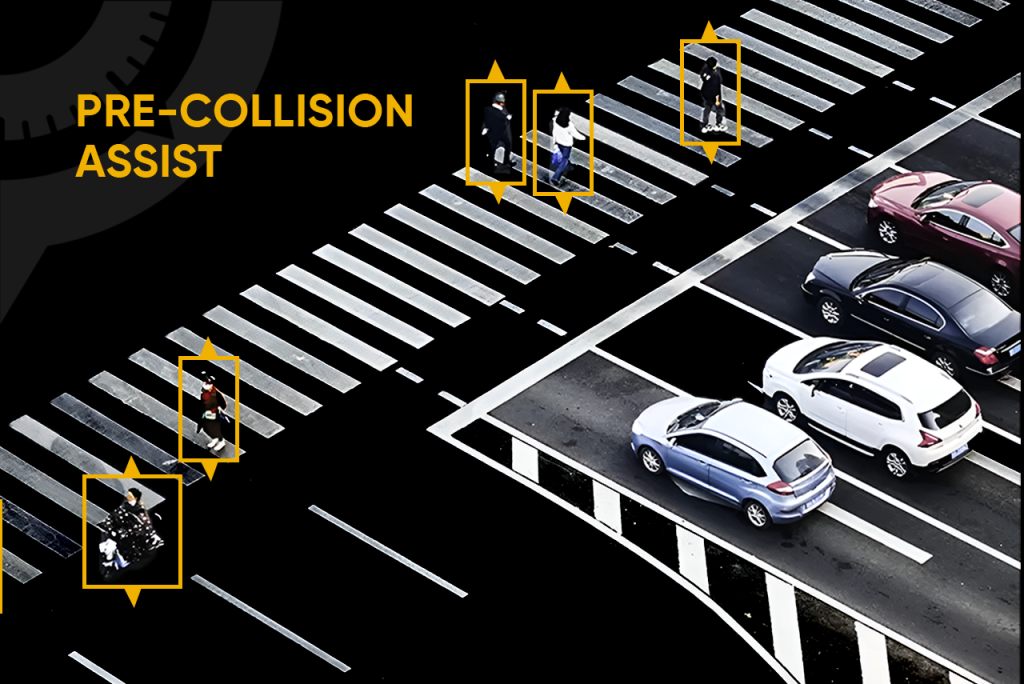
Known as Pre-Collision Assist and other names, it is a more advanced version of the collision avoidance system and autonomous emergency braking that can identify a person or cyclist who is or appears in the path of the car. If that happens, it signals danger and applies the brakes if necessary. Some advanced systems – like those of BMW and Cadillac - use infrared technology to better identify people or animals at night before they are caught in headlights or noticed by the human eye.
Examples: Cadillac Night Vision, BMW Night Vision with Pedestrian Detection, Volvo City Safety.
11. Surround View
360-degree camera system, the so-called. Surround View combines images from optics installed in the front and rear of the car, under the rear-view mirrors, etc., into a picture that is displayed on the center console of the car. Drivers can monitor the situation around the car as well as from the top at any time of the day. This is really helpful when you are reversing or maneuvering in tight spaces.
Examples: BMW Surround View Camera System with 3D View, Nissan Around View Monitor, Volvo 360 Surround View.
12. Parking Assistant
There are several systems available to make parking easier - from sound signals to more advanced ones that use rear view cameras. Simple ultrasonic sensors mounted on the bumper emit a sound signal that becomes more frequent as the car approaches objects.
Rear view cameras allow you to see the picture behind the vehicle. And they are not just widely available now, but they are a federal requirement in the US for models manufactured after 2018.
The best solution is automatic parking systems from BMW, Chrysler, Ford and other companies. They allow drivers to simply stop in front of an open space, press a button, and focus on braking while their car slides into the parking space on its own.
Help in the service




















